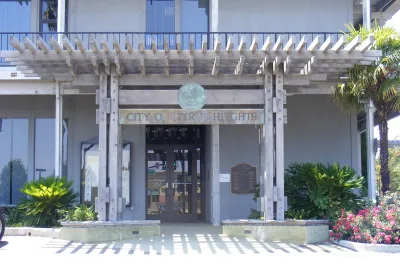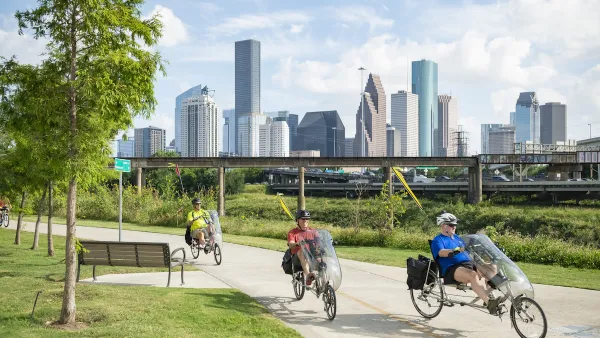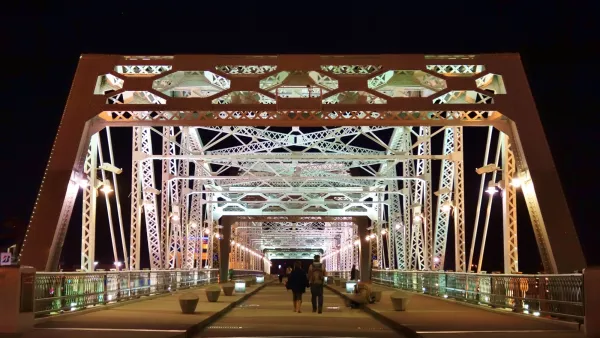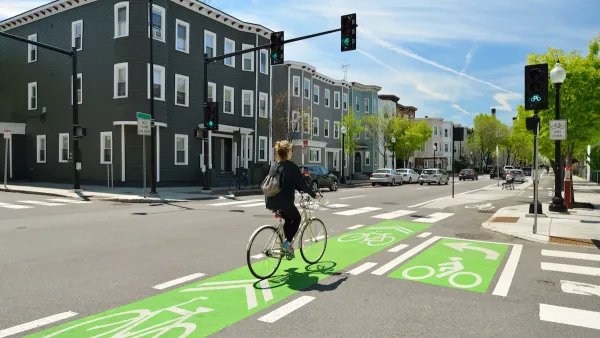A formerly underutilized corridor in Citrus Heights, California is being transformed into a vibrant, walkable street—and stimulating economic growth in the process.

An article from the California League of Cities highlights the successes of Citrus Heights, a town in the Sacramento area where "City officials embrace a transportation philosophy known as complete streets, meaning that mobility for all users, including transit users, pedestrians, and cyclists, is incorporated into infrastructure projects, along with greenhouse emission goals."
As the article states, "Investments in local infrastructure can yield benefits that extend far beyond the curb. A 2021 report found that upcoming spending on federal, state, and local infrastructure will generate nearly $200 billion in economic activity in California alone." Citrus Heights provides an example of how local investments generate further investment and economic development.
For starters, the number of conflict points, such as fewer left-hand turns, has been reduced, which lowered the area’s crash rate by 9%. Travel lanes are also narrower, and the roadway was constructed with the extra protection of vertical curbs, which also reduces the likelihood of a crash.
Additionally, the medians and sidewalks are lined with trees, providing much-needed shade for pedestrians and cyclists, as well as a barrier from oncoming traffic. Utility wires have been placed underground, reducing the number of sidewalk obstructions for pedestrians.
According to the article, the infrastructure improvements along the city's Auburn Boulevard have spurred $23 million in new investment and new businesses, creating hundreds of jobs. The article praises Citrus Heights for its commitment to encouraging infill development and making improvements to pedestrian and bike infrastructure that "provide a sense of community vibrancy that has really been lacking in this corridor."

National Parks Layoffs Will Cause Communities to Lose Billions
Thousands of essential park workers were laid off this week, just before the busy spring break season.

Retro-silient?: America’s First “Eco-burb,” The Woodlands Turns 50
A master-planned community north of Houston offers lessons on green infrastructure and resilient design, but falls short of its founder’s lofty affordability and walkability goals.

Delivering for America Plan Will Downgrade Mail Service in at Least 49.5 Percent of Zip Codes
Republican and Democrat lawmakers criticize the plan for its disproportionate negative impact on rural communities.

Test News Post 1
This is a summary

Test News Headline 46
Test for the image on the front page.

Balancing Bombs and Butterflies: How the National Guard Protects a Rare Species
The National Guard at Fort Indiantown Gap uses GIS technology and land management strategies to balance military training with conservation efforts, ensuring the survival of the rare eastern regal fritillary butterfly.
Urban Design for Planners 1: Software Tools
This six-course series explores essential urban design concepts using open source software and equips planners with the tools they need to participate fully in the urban design process.
Planning for Universal Design
Learn the tools for implementing Universal Design in planning regulations.
EMC Planning Group, Inc.
Planetizen
Planetizen
Mpact (formerly Rail~Volution)
Great Falls Development Authority, Inc.
HUDs Office of Policy Development and Research
NYU Wagner Graduate School of Public Service





























